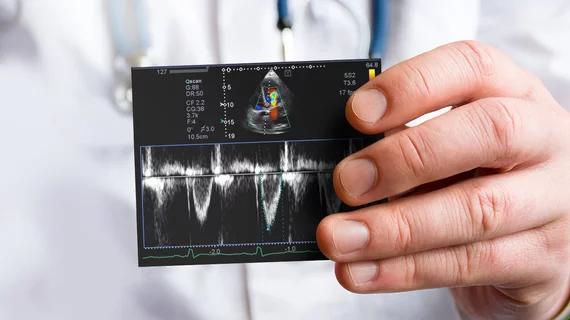Cardiology groups share new AUC for cardiovascular imaging prior to noncardiac surgery
The American College of Cardiology (ACC), American Heart Association (AHA) and several other industry groups have collaborated on new recommendations designed to help care teams know when and how to perform imaging-based cardiovascular evaluations on patients undergoing nonemergent, noncardiac surgery.
This new appropriate use criteria (AUC) document, published in the Journal of the American College of Cardiology, is believed to be the first of its kind.[1]
“Due to the vast number of imaging modalities available, it can be challenging to choose the best test addressing the clinical question at hand while avoiding unnecessary ones,” wrote writing group chair John U. Doherty, MD, a cardiologist with Thomas Jefferson University Hospital, and colleagues. “Healthcare spending in the United States is growing at a rapid pace. The Centers for Medicare and Medicaid reported 2017’s total healthcare spending in the United States was $3.5 trillion, a 3.9% increase from the previous year. This spending accounted for 17.9% of the gross domestic product. There is a significant financial impact of preoperative risk assessment and imaging, and our goal is to avoid overutilizing imaging preoperatively where value may be limited while balancing its cost against the substantial consequences associated with perioperative major adverse cardiac events.”
The AUC document explores 11 different imaging modalities, including everything from echocardiography to and more than 180 clinical scenarios, detailing which modalities would be recommended for each specific example. While some scenarios focus on the treatment of patients with no known or suspected heart disease, others feature patients with known heart disease with and without a recent history of medical imaging.
“Preoperative risk assessment has become a part of the daily practice of many medical professionals, and having a concise, accurate, and easy-to-use framework to guide appropriate imaging selection prior to nonemergent noncardiac surgery can be extremely useful in guiding them,” the authors wrote. “To this end, the document was created in such a way that clinical logic lends itself to the development of a point-of-care tool such as an application.”
Doherty et al. also emphasized that “not all patients are the same and local and institutional expertise may influence the choice of imaging modality in preoperative assessment.”
Click here to read the full analysis in the Journal of the American College of Cardiology.
In addition to the ACC and AHA, the American Society of Echocardiography, American Society of Nuclear Cardiology, Heart Failure Society of America, Heart Rhythm Society, Society for Cardiovascular Angiography and Interventions, Society of Cardiovascular Computed Tomography, Society for Cardiovascular Magnetic Resonance and Society of Thoracic Surgeons all contributed to this AUC document.

